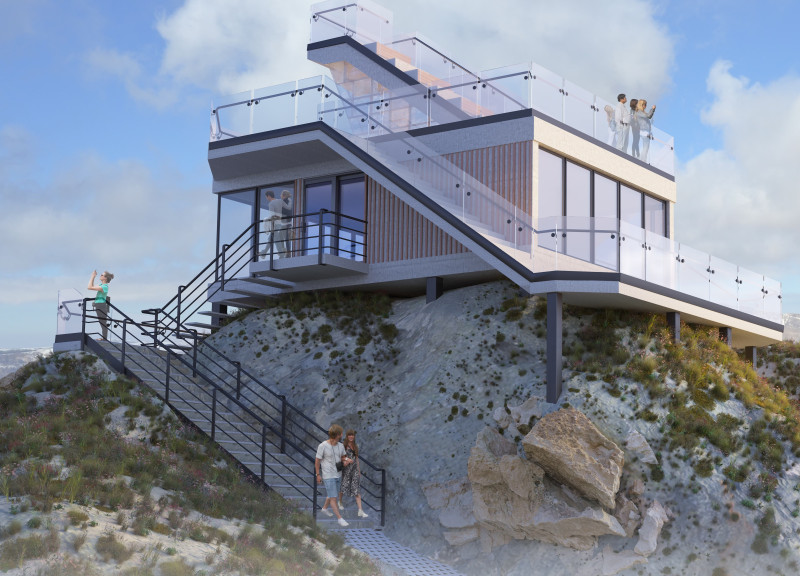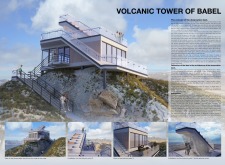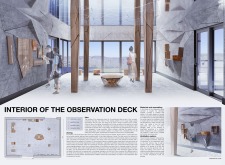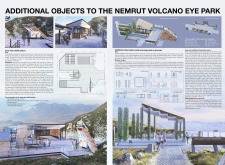5 key facts about this project
This project represents a synthesis of innovative architectural ideas that prioritize sustainability and user experience. The primary function of the building encompasses a variety of uses, including social spaces, recreational areas, and facilities for local organizations. This multifunctional approach not only meets diverse community needs but also promotes interaction and collaboration among users, creating a sense of belonging.
Upon entering the building, one is immediately greeted by an open and inviting foyer that seamlessly transitions into different areas. Large windows and strategically placed skylights allow natural light to flood the interior, creating a warm and welcoming atmosphere. This thoughtful consideration of daylighting not only enhances the aesthetic quality of the spaces but also reduces reliance on artificial lighting, reflecting a commitment to sustainable design practices.
The architectural design incorporates a range of materials that harmonize with the local environment while providing durability and functionality. The use of exposed concrete serves as a structural element, allowing for wide spans and flexible interior spaces. In addition, natural wood accents have been incorporated into the design, providing warmth and a tactile experience that contrasts with the harsher elements of concrete and glass. High-performance glazing is utilized throughout the façade, ensuring energy efficiency while offering unobstructed views of the surroundings.
Notably, the design features a series of green roofs and planted terraces that not only enhance the visual appeal of the building but also contribute to local biodiversity. This integration of nature within the architectural framework serves as a reminder of the importance of ecological considerations in contemporary design practices. The project also employs rainwater harvesting systems, which help manage stormwater runoff and reduce the burden on municipal systems.
Unique design approaches are evident in various elements throughout the project. For instance, the integration of flexible spaces allows for multipurpose usage, accommodating a wide range of activities from workshops to community events. This adaptability is a fundamental aspect of the project’s success, as it enables the building to evolve and respond to changing community needs over time.
Furthermore, the exterior expression of the building reflects a contemporary architectural language, characterized by clean lines and a thoughtful interplay of planes. The façade is designed not simply as a barrier but as a transparent interface between the interior and exterior, inviting passersby to engage with the activities within. This blurred boundary enhances the vibrancy of the environment and encourages a sense of curiosity and engagement.
The project takes into account the surrounding urban fabric by incorporating pedestrian pathways, public art installations, and communal gathering spaces, promoting social interaction and making the building a hub for community life. These elements contribute to creating a lively atmosphere, inviting people to explore and utilize the space in various ways. Such attention to public realm considerations is vital, as it fosters a sense of ownership and pride among local residents.
As this architectural design project continues to integrate itself into the community, it stands as a testament to the potential of thoughtful design to influence social structures positively. Readers interested in exploring the project further are encouraged to delve into specific elements such as architectural plans, architectural sections, and architectural designs that reveal deeper insights into the innovative ideas and strategies employed throughout the project. Engaging with these materials will provide a comprehensive understanding of how this project achieves its visionary goals while remaining grounded in practical functionality.


























